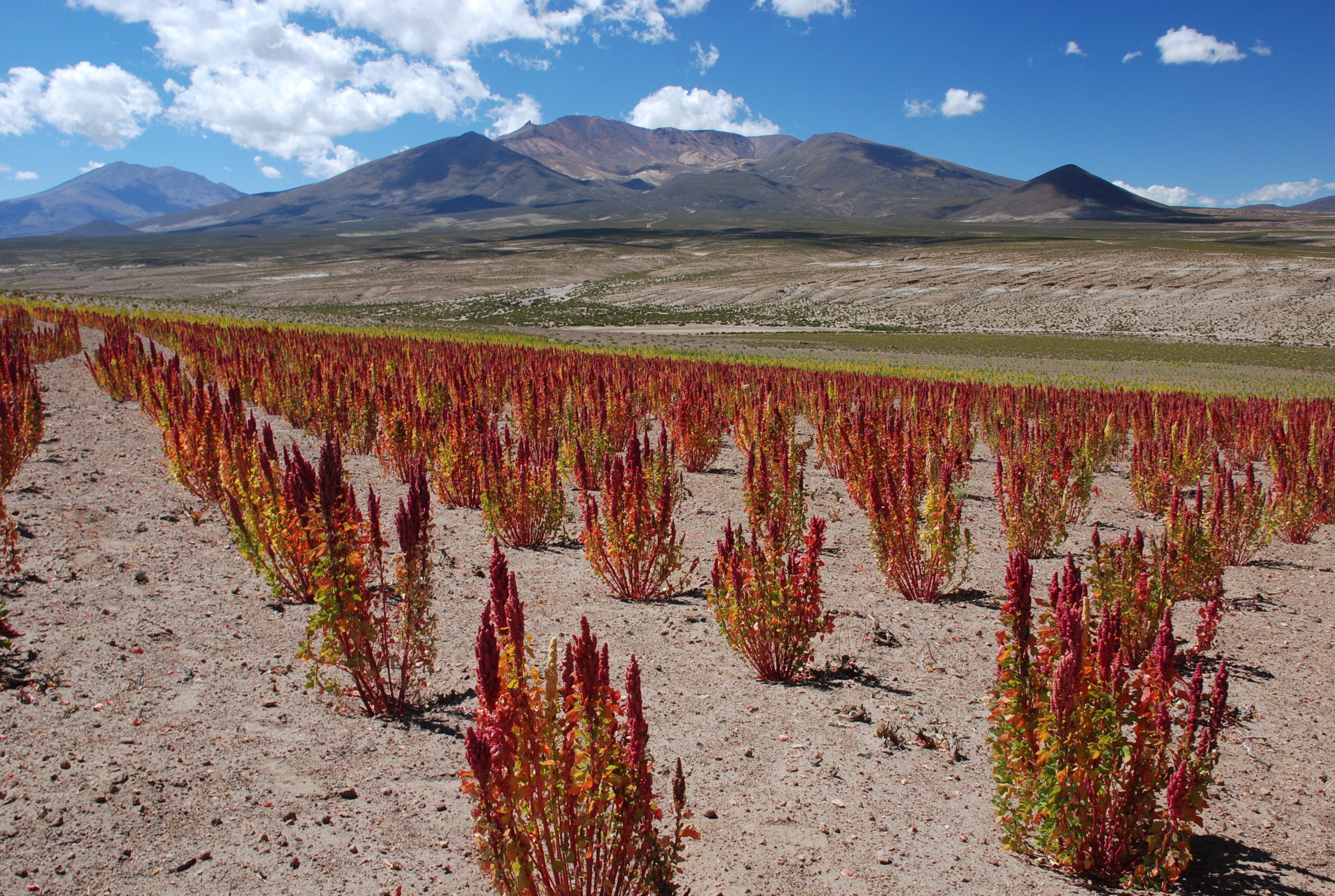The Quinoa Controversy: The implications of the growing popularity of a Bolivian grain

By Jade Adia Harvey
Esquire labeled it “The Miracle Grain of the Andes”. The New York Times dubbed it “The Lost Crop of the Inca.” Global development experts call it one of our most important weapons in the fight to end world hunger.
After 7000 years of cultivation in southern Bolivia and decades of mispronunciation by confused American consumers (keen-wa, not qui-no-ah), quinoa has hit the big time. The humble grain, once considered “indigenous people food” and ignored by the Bolivian upper classes, now features in fine cuisine the world over. But quinoa’s Good Housekeeping recipes and Iron Chef stardom don’t come free: the complex carb has been battered by a storm of controversy over the ethics of expanding its production in Bolivia.
Quinoa’s new “superfood” title is no surprise. Referred to by the Inca as Chisaya Mama, meaning “Mother of All Grains,” the seed boasts over five times more protein than white rice. Since Western health food providers caught wind of its health benefits, quinoa has achieved international prominence. Bolivian production has expanded from 240 square miles of farmland in 2009 to 400 square miles in 2012; in 2010, Bolivia exported around 15,000 metric tons of quinoa to the U.S., Canada, Brazil, and Europe, surpassing Peru and Ecuador as the world’s principal supplier.

But not all Western consumers are adding quinoa to their salads. Online petitioners have launched boycotts of Andean quinoa, and the blogosphere has been overtaken by articles attacking the increase in the domestic price of Bolivian quinoa, land disputes, and the rise in consumption of unhealthy, overly-processed foods like soda and white bread among locals.
Pablo Laguna, an anthropologist who studies quinoa’s influence on Bolivian communities, responds to these claims with frustration, calling them “totally unsupported.” Yes, he says, quinoa prices have almost doubled from $120 per 100lb to $200 from July to August of this year. However, Laguna assures me, the Bolivians who have always eaten quinoa—lower-class urbanites with kinship ties to rural families—still have access to their staple crop. Citing his long history of work with farmers, he calls rural Bolivians “quite enthusiastic” about the sudden popularity of a crop that has long been underappreciated. And with their new profits, farming families can add variety to their diets, consuming more vegetables and meat than ever before. Laguna claims that this change in diet has contributed to the nearly six-year increase in Bolivian life expectancy since 1995.
Some argue that, as the urban poor and llama farmers fight quinoa farmers for space to grow the mother of all cash crops, tension has risen in a formerly peaceful area. Laguna replies that land disputes long predate quinoa’s newfound popularity. It is naive to romanticize Bolivia–land policy in the countryside was far from perfect, even before quinoa.
When asked about the growing prevalence of processed food in many Bolivians’ diets, Laguna points out that developing nations tend to turn to a Western diet not because they have to, but because when wealth increases, American food products become status symbols. And the Bolivian government still integrates quinoa into school lunches and meals for the armed forces and pregnant women, ensuring that Bolivian citizens can reap the nutritional benefits of their own crop.

According to the World Bank, poverty affects fifty percent of the population in large Bolivian cities, sixty-seven percent in other urban areas, and eighty percent in rural areas. Whatever the social arguments against quinoa, the crop’s cultivation is beginning to lift the farming communities of Bolivia, the poorest nation in South America, out of extreme poverty.
The consequences of quinoa’s rise are complicated, but then again, so is our entire global food system. In a world of mostly-free trade, an increase in demand for some commodity will inevitably increase the price of that commodity. What used to be an overlooked South American staple crop is now celebrated by diplomats, students and farmers alike and has the potential to change not only the lives of rural Bolivians, but of starving families around the world. The United Nations even designated 2013 as the International Year of Quinoa in an effort to raise awareness of its unique potential to combat hunger and malnutrition; soon, quinoa may be more than just a Western food fad. And the grain is gluten-free, vegan and—for now—almost always grown organically. Until more evidence arises that quinoa is in fact an overall detriment to Bolivian society, I’ll keep it on my plate.
Jade Adia Harvey ’17 is in Ezra Stiles College. She can be reached at jade.harvey@yale.edu.